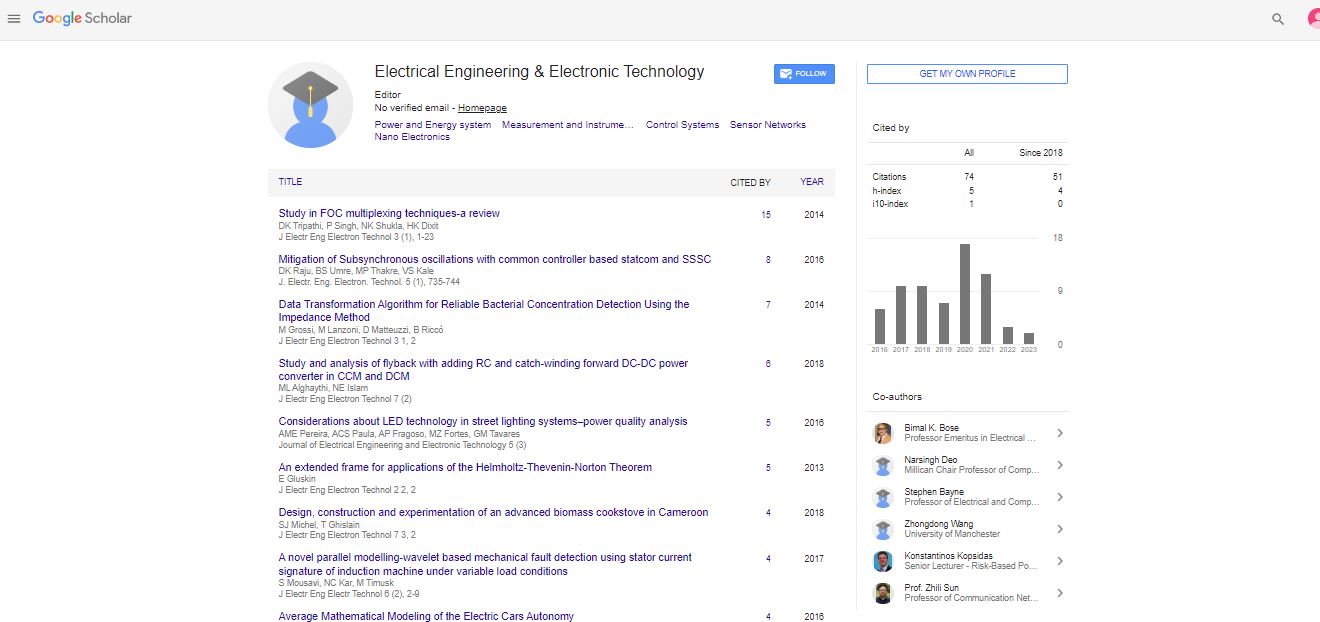Ordered DNA fragmentation on surfaces for NGS sequencing
NaHyun Cho, Ke Zhu, Julia Budassi and Jonathan Sokolov
Stony Brook University, USA
: J Electr Eng Electron Technol
Abstract
Next Generation Sequencing (NGS) technology starts with 200 ~ 300 base pairs of random small DNA fragments that are cut from whole genomic DNA. For instance, human being’s genomic DNA is 3.2x109 base pairs, so assuming that the human DNA are cut into 300 base pairs fragments, there are 1.1x107 fragments to sequence. Furthermore, in order to have statistically accurate sequencing data, massive parallel sequencing is required. It means that every genomic region of DNA fragments should be sequenced several times to reduce erroneous reads. It requires massive labor and time due to the randomness of DNA fragmentation in liquid solution. However, if it is possible to keep the order of cut DNA fragments instead of randomly cutting, the assembly of a contiguous sequence will be significantly simplified. In this study, we have researched non-random cutting and ordering of DNA on deposited and aligned polymer surfaces instead of typical liquid-based random DNA fragmentation in molecular biology. To have a controlled cutting process of DNA while keeping the ordering, we lineally anchored DNA molecules on a PMMA (Poly methyl Methacrylate) surface, so the DNA molecules are stationary. We cut the stretched DNA molecules on the surface with enzyme solution using a patterned PDMS (Polydimethylsiloxane) stamp having micron-sized features. Since the stamp has a grating structure, it enables the enzyme solution selectively to touch the anchored DNA molecules. Currently, we have studied the digestion mechanism of enzyme for the DNA molecules on the PMMA surface. We have used DNase I enzyme and NEBNext® dsDNA Fragmentase® from New England Biolabs because they nonspecifically cleave DNA molecules. Also, we have tried restriction enzymes such as XbaI and PvuI to understand the enzyme digestion mechanism on surface. For sample preparation, we use silicon wafers as substrates and spin cast PMMA solutions to cover the substrate with a thin film to anchor DNA molecules linearly. PDMS stamps were patterned using soft -lithography technology in Brookhaven National Lab, New York. For cutting the DNA on the surface, the stamp is coated with enzyme solution and placed in contact with the DNA molecules. After cutting, the DNA molecules and PMMA film are dissolved with organic solvent and the DNA is extracted using liquid-liquid separation (Organic phase: Aqueous phase). Confocal microscopy and Atomic force microscopy (AFM) were used to image the DNA molecules on the PMMA surface. Gel electrophoresis was conducted to confirm the distribution of the DNA fragments.
Biography
NaHyun Cho is a PhD candidate in Materials Science and Engineering at Stony Brook University in New York. She previously earned a BS in Engineering Chemistry and a ME in Materials Science and Engineering from at Stony Brook University. She spent two and half years in the field as a research engineer with LG Electronics in Seoul, South Korea, working in their crystalline solar cell R&D Center. Her current area of research is ordered DNA fragmentation on surfaces for next-generation sequencing. In order to further develop her research focus, she is a visiting student at both Cold Spring Harbor Laboratory and Brookhaven National Laboratory in New York.
 Spanish
Spanish  Chinese
Chinese  Russian
Russian  German
German  French
French  Japanese
Japanese  Portuguese
Portuguese  Hindi
Hindi 
